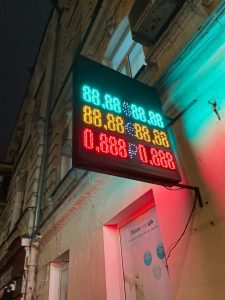As a forex trader, you must have heard of the stochastic oscillator, a momentum indicator that helps traders identify overbought and oversold conditions in the market. One of the most common strategies that traders use the stochastic oscillator for is the pullback strategy. In this article, we will explore the different stochastic settings that traders use for pullback forex and determine which is the best.
Before we dive into the stochastic settings, let’s first understand what the pullback strategy is. A pullback is a temporary reversal in the direction of a trend. Traders use pullbacks to enter the market at a better price and ride the trend for a profit. The stochastic oscillator can help traders identify when a pullback is about to end and the trend is set to continue.
The stochastic oscillator has two lines, %K and %D. The %K line represents the current closing price relative to the high and low range of the past few periods. The %D line is a moving average of the %K line. The stochastic oscillator oscillates between 0 and 100, with levels above 80 indicating overbought conditions and levels below 20 indicating oversold conditions.
Now let’s look at the different stochastic settings that traders use for pullback forex.
1. Default settings – The default settings for the stochastic oscillator are 14, 3, and 3. These settings mean that the indicator uses a 14-period lookback period for the %K line, and a 3-period moving average for the %D line. These settings are a good starting point for traders who are new to using the stochastic oscillator. However, many traders find that the default settings are too sensitive and generate too many false signals.
2. Slow settings – Some traders prefer to use slower settings for the stochastic oscillator to filter out noise and reduce false signals. The slow settings typically use a lookback period of 21 or 30 for the %K line and a 5 or 6 period moving average for the %D line. These settings are better suited for traders who prefer a more conservative approach to trading and are willing to wait for confirmation before entering a trade.
3. Fast settings – On the other hand, some traders prefer to use faster settings for the stochastic oscillator to generate more signals and take advantage of shorter-term trends. The fast settings typically use a lookback period of 5 or 6 for the %K line and a 2 or 3 period moving average for the %D line. These settings are better suited for traders who are comfortable taking on more risk and are willing to enter trades based on shorter-term signals.
4. Custom settings – Finally, some traders prefer to use custom settings for the stochastic oscillator based on their own trading style and preferences. These settings can vary widely and depend on factors such as the timeframe of the chart, the volatility of the market, and the trader’s risk tolerance.
So, which stochastic setting is best for pullback forex? The truth is that there is no one-size-fits-all answer to this question. The best stochastic setting for pullback forex depends on your trading style, risk tolerance, and market conditions. What works for one trader may not work for another.
That being said, there are some general guidelines that traders can follow when selecting stochastic settings for pullback forex. If you prefer a more conservative approach to trading, slower settings may be better suited for you. If you prefer a more aggressive approach, faster settings may be more appropriate. It’s also important to consider the volatility of the market and adjust your settings accordingly. In highly volatile markets, slower settings may be more effective in filtering out noise and reducing false signals.
In conclusion, the stochastic oscillator is a valuable tool for traders who use the pullback strategy in forex trading. The best stochastic setting for pullback forex depends on your individual trading style and market conditions. Experiment with different settings and find what works best for you. Remember to always use proper risk management and have a solid trading plan in place.





